Who Wrote the Dead Sea Scrolls?
Resolving the dispute over authorship of the ancient manuscripts could have far-reaching implications for Christianity and Judaism
Israeli archaeologist yuval peleg halts his jeep where the jagged Judean hills peter out into a jumble of boulders. Before us, across the flat-calm Dead Sea, the sun rises over the mountains of Jordan. The heat on this spring morning is already intense. There are no trees or grass, just a few crumbling stone walls. It is a scene of silent desolation—until, that is, tourists in hats and visors pour out of shiny buses.
They have come to this harsh and remote site in the West Bank, known as Qumran, because this is where the most important religious texts in the Western world were found in 1947. The Dead Sea Scrolls—comprising more than 800 documents made of animal skin, papyrus and even forged copper—deepened our understanding of the Bible and shed light on the histories of Judaism and Christianity. Among the texts are parts of every book of the Hebrew canon—what Christians call the Old Testament—except the book of Esther. The scrolls also contain a collection of previously unknown hymns, prayers, commentaries, mystical formulas and the earliest version of the Ten Commandments. Most were written between 200 B.C. and the period prior to the failed Jewish revolt to gain political and religious independence from Rome that lasted from A.D. 66 to 70—predating by 8 to 11 centuries the oldest previously known Hebrew text of the Jewish Bible.
Tour guides shepherding the tourists through the modest desert ruins speak of the scrolls’ origin, a narrative that has been repeated almost since they were discovered more than 60 years ago. Qumran, the guides say, was home to a community of Jewish ascetics called the Essenes, who devoted their lives to writing and preserving sacred texts. They were hard at work by the time Jesus began preaching; ultimately they stored the scrolls in 11 caves before Romans destroyed their settlement in A.D. 68.
But hearing the dramatic recitation, Peleg, 40, rolls his eyes. “There is no connection to the Essenes at this site,” he tells me as a hawk circles above in the warming air. He says the scrolls had nothing to do with the settlement. Evidence for a religious community here, he says, is unconvincing. He believes, rather, that Jews fleeing the Roman rampage hurriedly stuffed the documents into the Qumran caves for safekeeping. After digging at the site for ten years, he also believes that Qumran was originally a fort designed to protect a growing Jewish population from threats to the east. Later, it was converted into a pottery factory to serve nearby towns like Jericho, he says.
Other scholars describe Qumran variously as a manor house, a perfume manufacturing center and even a tannery. Despite decades of excavations and careful analysis, there is no consensus about who lived there—and, consequently, no consensus about who actually wrote the Dead Sea Scrolls.
“It’s an enigmatic and confusing site,” acknowledges Risa Levitt Kohn, who in 2007 curated an exhibit about the Dead Sea Scrolls in San Diego. She says the sheer breadth and age of the writings—during a period that intersects with the life of Jesus and the destruction of the Second Jewish Temple in Jerusalem—make Qumran “a powder keg” among normally placid scholars. Qumran has prompted bitter feuds and even a recent criminal investigation.
Nobody doubts the scrolls’ authenticity, but the question of authorship has implications for understanding the history of both Judaism and Christianity. In 164 B.C., a group of Jewish dissidents, the Maccabees, overthrew the Seleucid Empire that then ruled Judea. The Maccabees established an independent kingdom and, in so doing, tossed out the priestly class that had controlled the temple in Jerusalem since the time of King Solomon. The turmoil led to the emergence of several rival sects, each one vying for dominance. If the Qumran texts were written by one such sect, the scrolls “help us to understand the forces that operated after the Maccabean Revolt and how various Jewish groups reacted to those forces,” says New York University professor of Jewish and Hebraic studies Lawrence Schiffman in his book Reclaiming the Dead Sea Scrolls. “While some sects were accommodating themselves to the new order in various ways, the Dead Sea group decided it had to leave Jerusalem altogether in order to continue its unique way of life.”
And if Qumran indeed housed religious ascetics who turned their backs on what they saw as Jerusalem’s decadence, then the Essenes may well represent a previously unknown link between Judaism and Christianity. “John the Baptizer, Jesus’ teacher, probably learned from the Qumran Essenes—though he was no Essene,” says James Charlesworth, a scrolls scholar at Princeton Theological Seminary. Charlesworth adds that the scrolls “disclose the context of Jesus’ life and message.” Moreover, the beliefs and practices of the Qumran Essenes as described in the scrolls—vows of poverty, baptismal rituals and communal meals—mirror those of early Christians. As such, some see Qumran as the first Christian monastery, the cradle of an emerging faith.
But Peleg and others discount Qumran’s role in the history of the two religions. Norman Golb, a University of Chicago professor of Jewish history (and an academic rival of Schiffman), believes that once Galilee fell during the Jewish revolt, Jerusalem’s citizens knew that the conquest of their city was inevitable; they thus gathered up texts from libraries and personal collections and hid them throughout the Judean wilderness, including in the caves near the Dead Sea. If that’s the case, then Qumran was likely a secular—not a spiritual—site, and the scrolls reflect not just the views of a single dissident group of proto-Christians, but a wider tapestry of Jewish thought. “Further determination of the individual concepts and practices described in the scrolls can be best achieved not by forcing them to fit into the single sectarian bed of Essenism,” Golb argued in the journal Biblical Archaeologist.
One assumption that is now widely accepted is that the majority of the scrolls did not originate at Qumran. The earliest texts date to 300 B.C.—a century before Qumran even existed as a settlement—and the latest to a generation before the Romans destroyed the site in A.D. 68. A few scrolls are written in sophisticated Greek rather than a prosaic form of Aramaic or Hebrew that would be expected from a community of ascetics in the Judean desert. And why would such a community keep a list, etched in rare copper, of precious treasures of gold and silver—possibly from the Second Temple in Jerusalem—that had been secreted away? Nor does the word “Essene” appear in any of the scrolls.
Of course none of this rules out the possibility that Qumran was a religious community of scribes. Some scholars are not troubled that the Essenes are not explicitly mentioned in the scrolls, saying that the term for the sect is a foreign label. Schiffman believes they were a splinter group of priests known as the Sadducees. The notion that the scrolls are “a balanced collection of general Jewish texts” must be rejected, he writes in Biblical Archaeologist. “There is now too much evidence that the community that collected those scrolls emerged out of sectarian conflict and that [this] conflict sustained it throughout its existence.” Ultimately, however, the question of who wrote the scrolls is more likely to be resolved by archaeologists scrutinizing Qumran’s every physical remnant than by scholars poring over the texts.
The dead sea scrolls amazed scholars with their remarkable similarity to later versions. But there were also subtle differences. For instance, one scroll expands on the book of Genesis: in Chapter 12, when Abraham’s wife Sarah is taken by the Pharaoh, the scroll depicts Sarah’s beauty, describing her legs, face and hair. And in Chapter 13, when God commands Abraham to walk “through the land in the length,” the scroll adds a first-person account by Abraham of his journey. The Jewish Bible, as accepted today, was the product of a lengthy evolution; the scrolls offered important new insights into the process by which the text was edited during its formation.
The scrolls also set forth a series of detailed regulations that challenge the religious laws practiced by the priests in Jerusalem and espoused by other Jewish sects such as the Pharisees. Consequently, scholars of Judaism consider the scrolls to be a missing link between the period when religious laws were passed down orally and the Rabbinic era, beginning circa A.D. 200, when they were systematically recorded—eventually leading to the legal commentaries that became the Talmud.
For Christians as well, the scrolls are a source of profound insight. Jesus is not mentioned in the texts, but as Florida International University scholar Erik Larson has noted, the scrolls have “helped us understand better in what ways Jesus’ messages represented ideas that were current in the Judaism of his time and in what ways [they were] distinctive.” One scroll, for example, mentions a messianic figure who is called both the “Son of God” and the “Son of the Most High.” Many theologians had speculated that the phrase “Son of God” was adopted by early Christians after Jesus’ crucifixion, in contrast to the pagan worship of the Roman emperors. But the appearance of the phrase in the scrolls indicates the term was already in use when Jesus was preaching his gospel.
Whoever hid the scrolls from the Romans did a superb job. The texts at Qumran remained undiscovered for nearly two millennia. A few 19th-century European travelers examined what they assumed was an ancient fortress of no particular interest. Then, near it in 1947, a goat strayed into a cave, a Bedouin shepherd flung a stone into the dark cavern and the resulting clink against a pot prompted him to investigate. He emerged with the first of what would be about 15,000 fragments of some 850 scrolls secreted in the many caves that pock the cliffs rising above the Dead Sea.
The 1948 Arab-Israeli War prevented a close examination of the Qumran ruins. But after a fragile peace set in, a bearded and bespectacled Dominican monk named Roland de Vaux started excavations of the site and nearby caves in 1951. His findings of spacious rooms, ritual baths and the remains of gardens stunned scholars and the public alike. He also unearthed scores of cylindrical jars, hundreds of ceramic plates and three inkwells in or near a room that he concluded had once contained high tables used by scribes.
Shortly before de Vaux began his work, a Polish scholar named Jozef Milik completed a translation of one scroll, “The Rule of the Community,” which lays out a set of strict regulations reminiscent of those followed by a sect of Jews mentioned in A.D. 77 by the Roman historian Pliny the Elder. He called the sect members Essenes, and wrote that they lived along the western shore of the Dead Sea “without women and renouncing love entirely, without money, and having for company only the palm trees.” Pliny’s contemporary, historian Flavius Josephus, also mentions the Essenes in his account of the Jewish War: “Whereas these men shun the pleasures as vice, they consider self-control and not succumbing to the passions virtue.” Based upon these references, de Vaux concluded that Qumran was an Essene community, complete with a refectory and a scriptorium—medieval terms for the places where monks dined and copied manuscripts.
Though he died in 1971 before publishing a comprehensive report, de Vaux’s picture of Qumran as a religious community was widely accepted among his academic colleagues. (Much of his Qumran material remains locked up in private collections in Jerusalem and Paris, out of reach of most scholars.) By the 1980s, however, new data from other sites began casting doubt on his theory. “The old views have been outstripped by more recent discoveries,” says Golb.
For example, we now know that Qumran was not the remote place it is today. Two millennia ago, there was a thriving commercial trade in the region; numerous settlements dotted the shore, while ships plied the sea. Springs and runoff from the steep hills were carefully engineered to provide water for drinking and agriculture, and date palms and plants produced valuable resins used in perfume. And while the heavily salinated sea lacked fish, it provided salt and bitumen, the substance used in ancient times to seal boats and mortar bricks. Far from being a lonely and distant community of religious nonconformists, Qumran was a valuable piece of real estate—a day’s donkey ride to Jerusalem, a two-hour walk to Jericho and a stroll to docks and settlements along the sea.
And a closer look at de Vaux’s Qumran findings raises questions about his picture of a community that disdained luxuries and even money. He uncovered more than 1,200 coins—nearly half of which were silver—as well as evidence of hewn stone columns, glass vessels, glass beads and other fine goods. Some of it likely comes from later Roman occupation, but Belgian husband-and-wife archaeologists Robert Donceel and Pauline Donceel-Voute believe that most of the accumulated wealth indicates that Qumran was an estate—perhaps owned by a rich Jerusalem patrician—that produced perfume. The massive fortified tower, they say, was a common feature of villas during a conflict-prone era in Judea. And they note that Jericho and Ein Gedi (a settlement nearly 20 miles south of Qumran) were known throughout the Roman world as producers of the balsam resin used as a perfume base. In a cave near Qumran, Israeli researchers found in 1988 a small round bottle that, according to lab analyses, contained the remains of resin. De Vaux claimed that similar bottles found at Qumran were inkwells. But they might just as well have been vials of perfume.
Other theories abound. Some think Qumran was a modest trading center. British archaeologist David Stacey believes it was a tannery and that the jars found by de Vaux were for the collection of urine necessary for scouring skins. He argues that Qumran’s location was ideal for a tannery—between potential markets like Jericho and Ein Gedi.
For his part, Peleg believes Qumran went through several distinct stages. As the morning heat mounts, he leads me up a steep ridge above the site, where a channel hewn into the rock brought water into the settlement. From our high perch, he points out the foundations of a massive tower that once commanded a fine view of the sea to the east toward today’s Jordan. “Qumran was a military post around 100 B.C.,” he says. “We are one day from Jerusalem, and it fortified the northeast shore of the Dead Sea.” Other forts from this era are scattered among the rocky crags above the sea. This was a period when the Nabateans—the eastern rivals of Rome—threatened Judea. But Peleg says that once the Romans conquered the region, in 63 B.C., there was no further need for such bases. He believes out-of-work Judean soldiers and local families may have turned the military encampment to peaceful purposes, building a modest aqueduct that emptied into deep rectangular pools so that fine clay for making pots could settle. “Not every pool with steps is a ritual bath,” he points out. He thinks the former soldiers built eight kilns to produce pottery for the markets of Ein Gedi and Jericho, grew dates and possibly made perfume—until the Romans leveled the place during the Jewish insurrection.
But Peleg’s view has won few adherents. “It’s more interpretation than data,” says Jodi Magness, an archaeologist at the University of North Carolina at Chapel Hill who shares de Vaux’s view that the site was a religious community. She says that some archaeologists—by refusing to acknowledge evidence that residents of Qumran hid the scrolls—are inclined to leap to conclusions since their research relies solely on the ambiguous, physical remains at the site.
Even jurisdiction over Qumran is a source of contention. The site is located on the West Bank, where Palestinians and some Israeli archaeologists say that Peleg’s excavations are illegal under international law.
The Qumran controversy took a bizarre turn last March, when Golb’s son, Raphael, was arrested on charges of identity theft, criminal impersonation and aggravated harassment. In a statement, the New York District Attorney’s office says that Raphael “engaged in a systematic scheme on the Internet, using dozens of Internet aliases, in order to influence and affect debate on the Dead Sea Scrolls, and in order to harass Dead Sea Scrolls scholars” who disputed his father’s findings. The alleged target was Golb’s old rival, Schiffman. For his part, Raphael Golb entered a plea of not guilty on July 8, 2009. The case has been adjourned until January 27.
About the only thing that the adversaries seem to agree on is that money is at the root of the problem. Popular books with new theories about Qumran sell, says Schiffman. Golb notes that the traditional view of Qumran is more likely to attract tourists to the site.
Some scholars seek a middle ground. Robert Cargill, an archaeologist at the University of California at Los Angeles, envisions Qumran as a fort that later sheltered a group producing not only scrolls but an income through tanning or pottery making. It was a settlement, he says, “that wanted to be self-reliant—the question is just how Jewish and just how devout they were.”
Efforts at compromise have hardly quelled the conflicting theories. Perhaps, as French archaeologist Jean-Baptiste Humbert suggests, Qumran scholars are shaped by their personal experience as well as by their research. “One sees what one wants to see,” says Humbert, whether it’s a monastery, a fort, a tannery or a manor house.
But the debate matters little to the thousands of visitors who flock to the Holy Land. For them, Qumran remains the place where a modern-day miracle occurred—the unlikely discovery of sacred texts, saved from destruction to enlighten future generations about the word of God. As I climb into Peleg’s jeep for the quick trip back to Jerusalem, new crowds of tourists are exiting the buses.
Andrew Lawler, who lives in rural Maine, wrote about the Iranian city of Isfahan in the April 2009 issue of Smithsonian.
/https://tf-cmsv2-smithsonianmag-media.s3.amazonaws.com/accounts/headshot/andrew2.png)
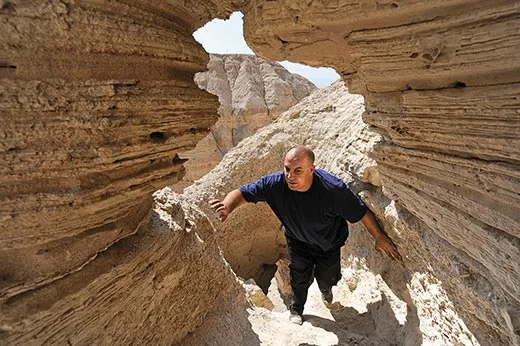
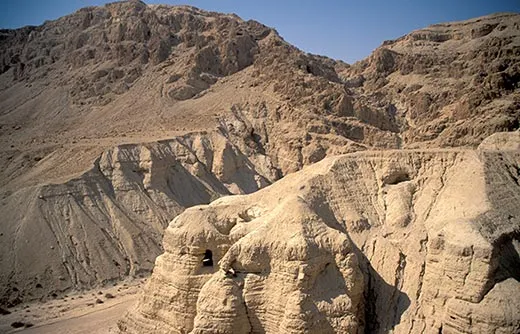
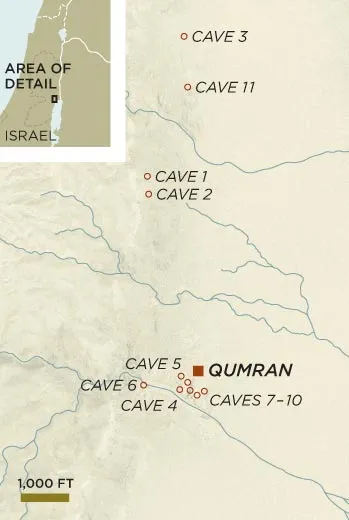
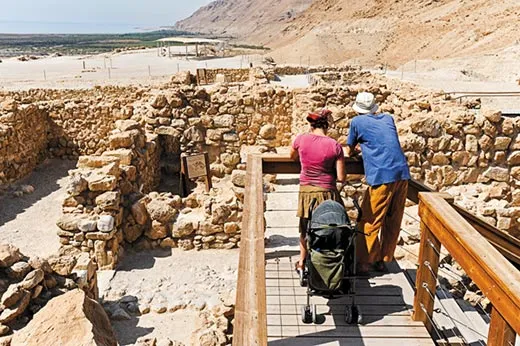
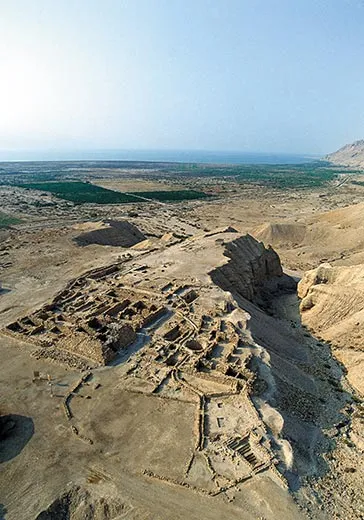
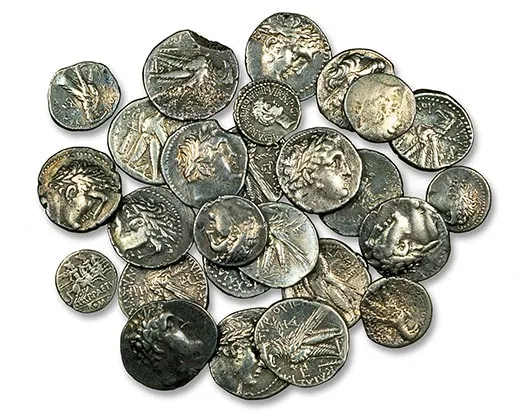
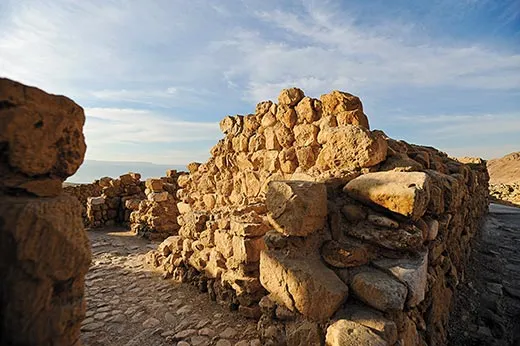
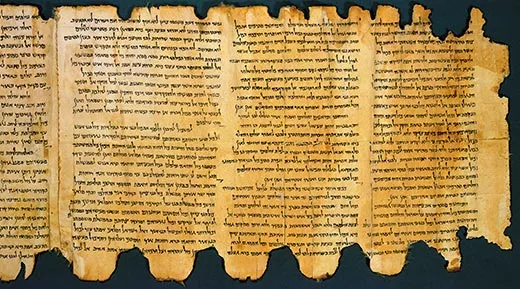
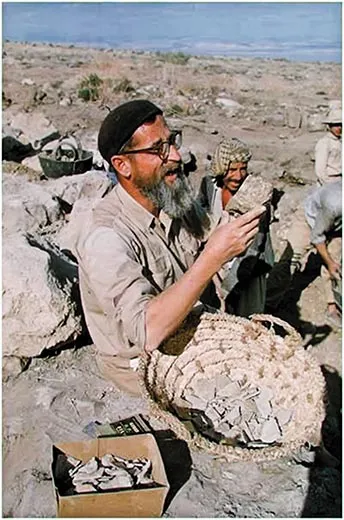
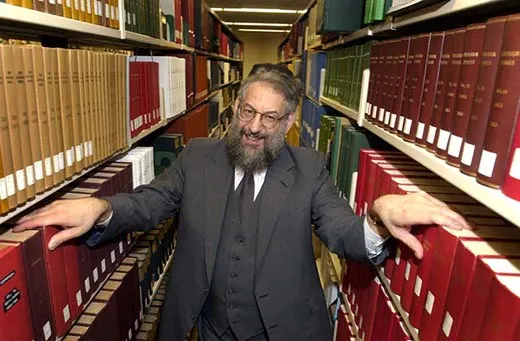
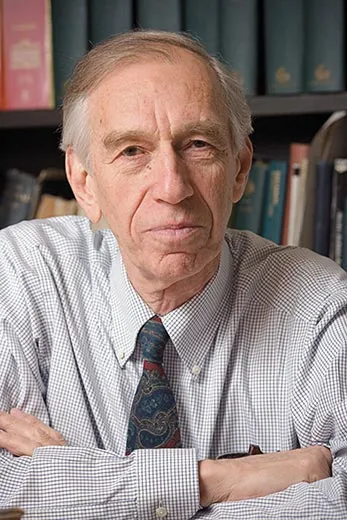

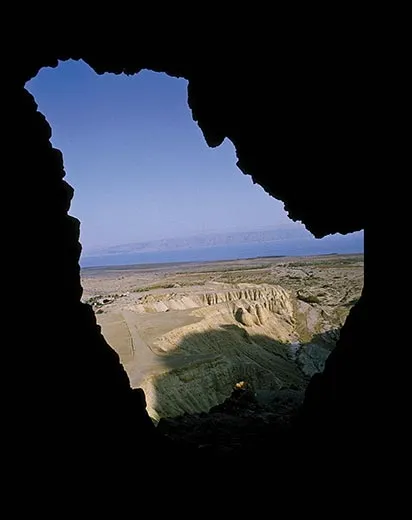
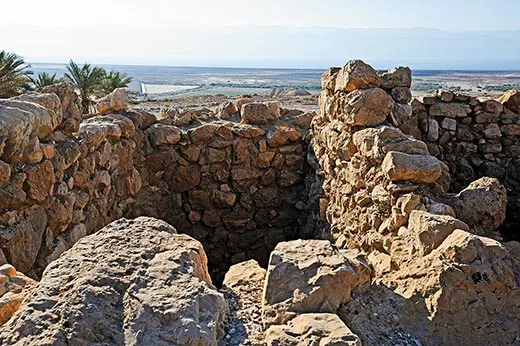

/https://tf-cmsv2-smithsonianmag-media.s3.amazonaws.com/accounts/headshot/andrew2.png)